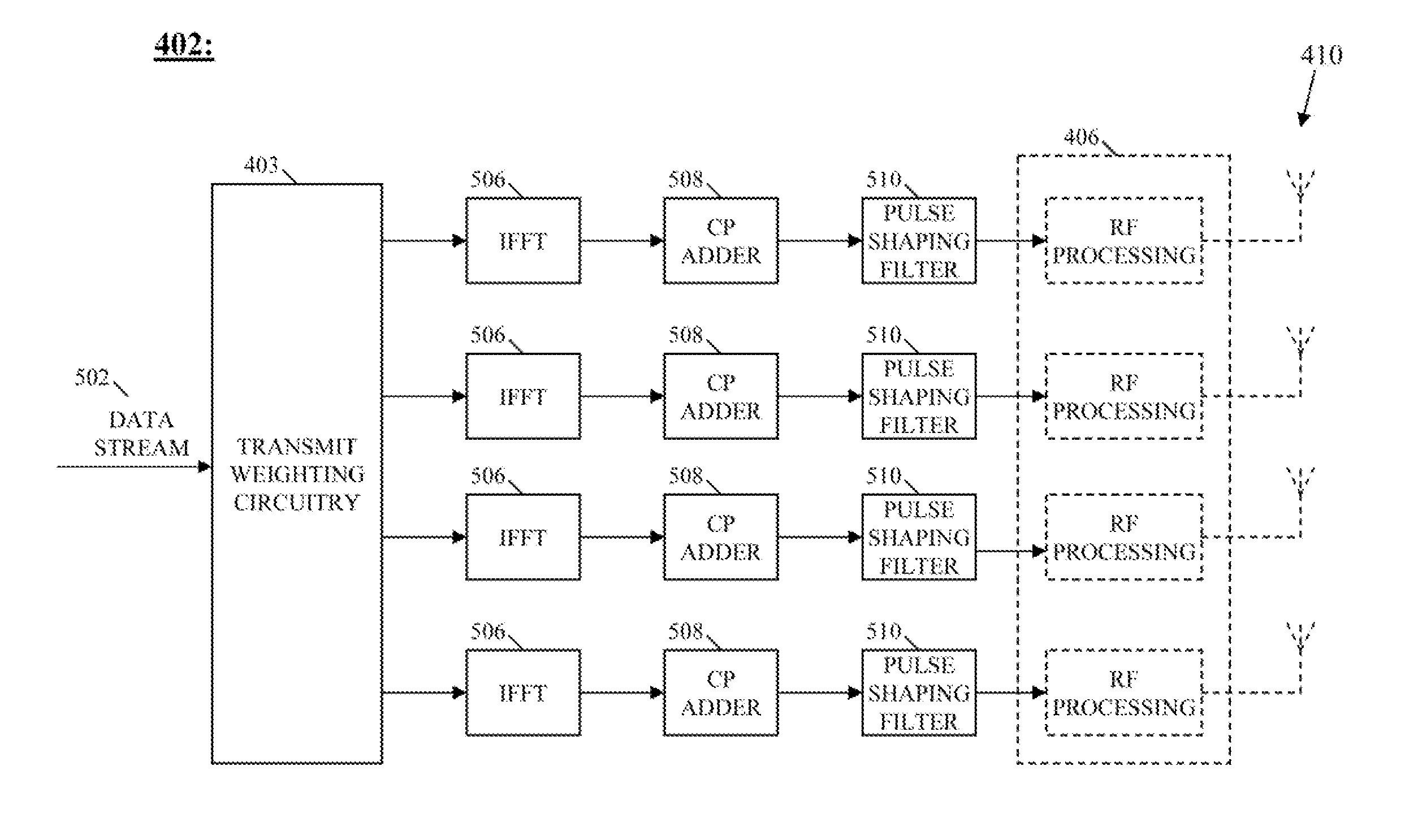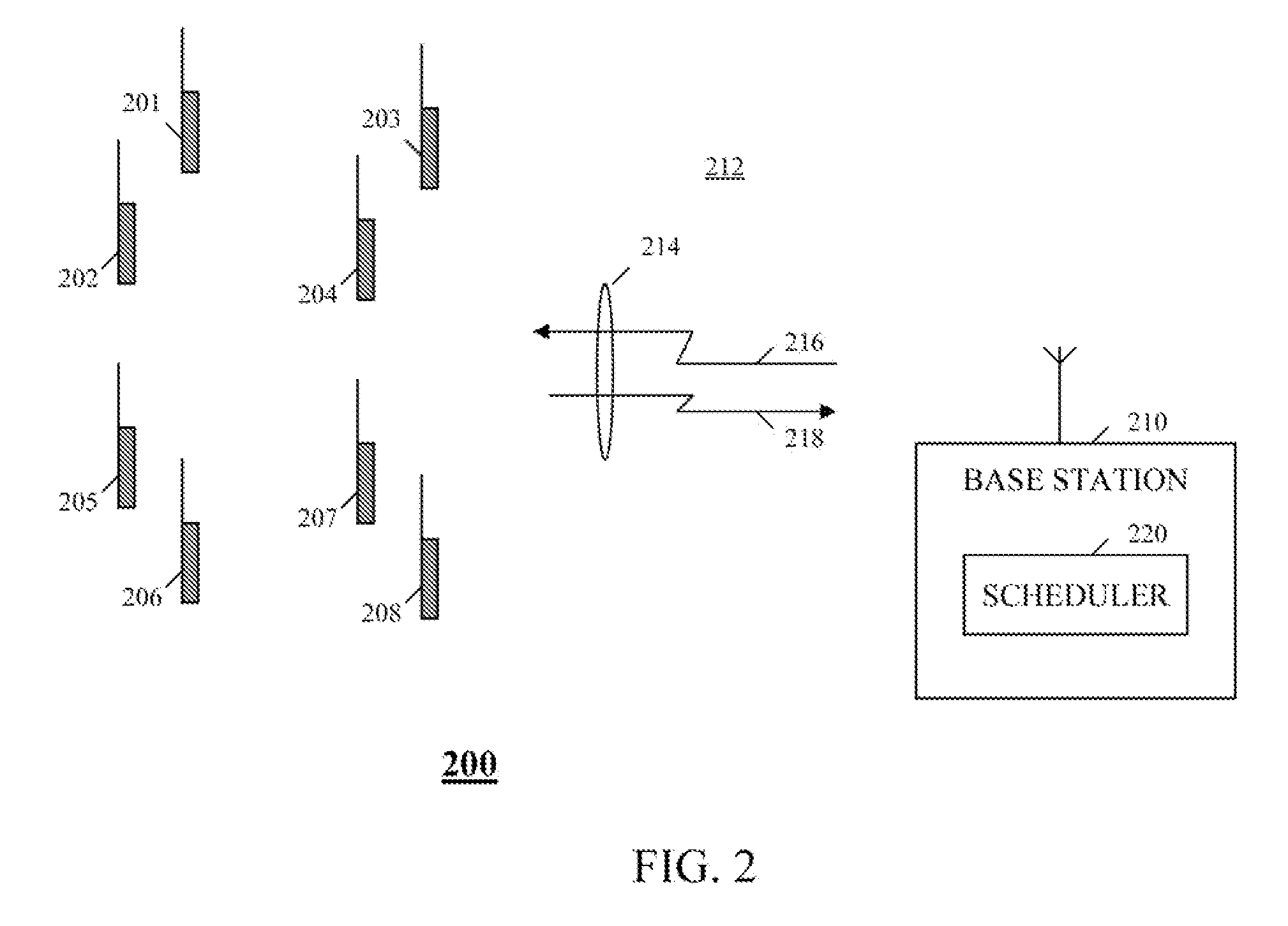Method and apparatus for major group scheduling in a fixed beam communication system
a fixed beam communication system and major group scheduling technology, applied in multiplex communication, orthogonal multiplex, polarisation/directional diversity, etc., can solve the problems of unassigned (wasted) resources, additional constraints on channel estimation algorithms, and inability to work in a major group
- Summary
- Abstract
- Description
- Claims
- Application Information
AI Technical Summary
Problems solved by technology
Method used
Image
Examples
Embodiment Construction
[0026]To address the need that exists for a method and apparatus that provides an improved system of beamforming and DL scheduling and which does not have the wasted system capacity of the prior art and which provides improved DL channel estimation over the closed loop feedback schemes of the prior art, an OFDMA communication system is provided that schedules partial usage of subchannels (PUSC) major groups by assigning a beam matrix of a plurality of beams to each major group of multiple PUSC major groups, receiving an uplink signal from each user equipment of multiple users equipment, which uplink signal provides an indication of a channel response associated with the user equipment, determining, for each user equipment of the multiple users equipment and based on the indication of channel quality received from the user equipment, a beam matrix and major group to which to assign the user equipment, and based on the determination of a beam matrix and major group to which to assign ...
PUM
 Login to View More
Login to View More Abstract
Description
Claims
Application Information
 Login to View More
Login to View More - R&D
- Intellectual Property
- Life Sciences
- Materials
- Tech Scout
- Unparalleled Data Quality
- Higher Quality Content
- 60% Fewer Hallucinations
Browse by: Latest US Patents, China's latest patents, Technical Efficacy Thesaurus, Application Domain, Technology Topic, Popular Technical Reports.
© 2025 PatSnap. All rights reserved.Legal|Privacy policy|Modern Slavery Act Transparency Statement|Sitemap|About US| Contact US: help@patsnap.com



